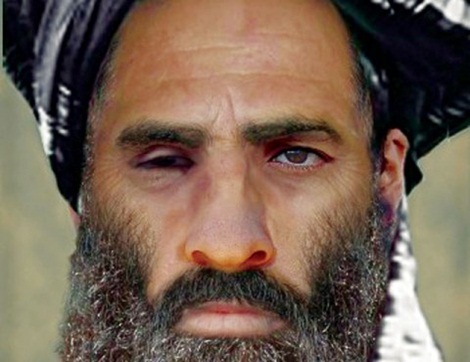
• The Taliban was created by America, Saudi Arabia and Pakistan in the late ’70s and early ’80s to fight the Soviet occupation of Afghanistan.
By the Staff at AFP
On the heels of the recent withdrawal of the defeated American Army from Iraq, President Barack Hussein Obama reached a peace agreement with the Afghan Taliban just before Christmas. He ordered the removal of supposed 9-11 mastermind Mullah Muhammed Omar from the Federal Bureau of Investigation (FBI)’s Ten Most Wanted Fugitives list, releasing several Taliban prisoners from Guantanamo Bay and promising them a role in the future Afghanistan government.
According to Iranian news media reports based upon documentation released by Iranian intelligence, United States military and State Department officials met secretly in Afghanistan with the leadership of the Afghan Taliban and reached a broad-based understanding that is intended to be the foundation for an Afghan government. The first condition was the unilateral release by the U.S. government of five Taliban leaders currently held in Guantanamo Bay and an end to the American demand that Omar, the leader of the Taliban, be arrested and prosecuted.
The removal of Omar from the Most Wanted list drew protests from the government of Hamid Karzai, which is threatened by the move. Karzai leads the coalition of U.S.-backed former insurgents who overthrew the Taliban government in 2001, following the 9-11 false-flag attacks.
“The Afghan government has called on the U.S. Embassy in Kabul to explain about the reports on removing Mullah Mohammad Omar’s name from the blacklist,” a Karzai spokesman said.
The story was first broken in the Pakistani media, which claimed the accord as a victory for Islamic insurgents in their country and Afghanistan who have been jointly fighting American forces since 2003.
According to the official story, Mullah Omar gave shelter to Osama bin Laden after 9-11, and the U.S. invaded and occupied his country on the premise that he had played a role in assisting the attacks, in which thousands of Americans died.
The accord may be part of an effort by the U.S. to resurrect Sunni resistance to the largely Shiite Iranian government. The Iranians have consolidated power in Iraq following the U.S. withdrawal. They are allied with the government of Syria and the Hezbollah guerrillas who control much of Lebanon, and which controls much of Afghanistan. Since the Islamic revolution, Iran had been largely contained by Sunni enemies on both sides—Saddam Hussein in Iraq and the Taliban in Afghanistan—but the elimination of these forces allowed Iran to achieve regional dominance.
The Taliban was created by America, Saudi Arabia and Pakistan in the late 1970s and early 1980s to fight the Soviet occupation of Afghanistan. Along with the Central Intelligence Agency, it later spawned a revolutionary movement, al Qaeda, whose leaders the U.S. has repeatedly claimed it killed during the decade of war that followed.
Saudi Arabia is a major regional rival to the Iranian government. The Saudi monarchy adheres to a variant of Islam called Wahhabism, which is opposed to Shiite Islam.

